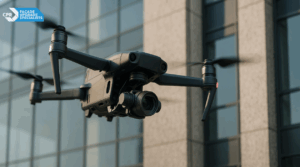Regular facade inspections for strata buildings help identify issues early, preventing costly repairs and ensuring safety. Protect your investment and maintain your property’s value with proactive maintenance.
It is considered very important to maintain a strata building on the outside for its long life and safety. The process of having a check on the façade allows for the detection of issues when they are in the minor stage; otherwise, those small problems become huge and cost a lot. This guide will help strata building owners in Australia understand the importance and benefits of these inspections better and specify common issues identified in the process.
Importance of Regular Facade Inspections
Routine facade inspections are necessary for the strata building to maintain sustainable structural integrity and aesthetic appeal. As such, inspections facilitate early detection of damage that may affect the integrity, safety, and value of a property. That said, such routine inspection provides better control over the early fixing of problems for building residents and gives them long-term health and safety.
- Early Problem Detection
Routine facade inspections identify problems such as cracks, water infiltration, and material degradation, among others, at their early stages of development. Building owners can project timely class actions, which will stall further damage and thus avoid expensive building repairs to guarantee continuous safety and functionality of the strata building.
- Compliance with Regulations
This is mandatory in most regions of Australia to ensure that a building is thoroughly compliant with local building codes and safety standards. Compliance with these regulations assures the safety of the occupants of the building against possible fines and legal liabilities. The scheduled inspection can help in remaining compliant and maintaining the integrity of the building structure.
- Safety Improvements
A regular façade inspection significantly contributed to the safe condition of a strata building by spotting essential hazards like loosely held materials, structural weakness, and water infiltration, which were then addressed as quickly as possible. Hence, it helps avoid accidents and provides a completely safe environment to all visitors and residents alike.
- Ensuring Raising Building Life
It is a fact that this consistent maintenance, through frequent facade inspections, can add to the life expectancy of a strata building by avoiding extreme deterioration. Early identification and rectification of problems will keep the building both structurally sound and looking good for many years, thus eliminating the need for extensive repairs to the building.
- Maintaining Property Value
A well-maintained façade supplements the appearance and value of a strata building. The periodic inspection and timely repairs of the façade also help preserve the market value of the building for resale, attracting customers and investors for the longevity of their investment.
Benefits of Facade Inspections for Strata Buildings
There are numerous benefits that regular façade inspections can provide to strata buildings, such as the maintenance of their structural integrity and aesthetic appeal while at the same time preventing costly repairs. Conducting routine inspections will help the building owner address issues before they turn into major problems, thus ensuring long-term health and safety.
- Cost Savings through Proactive Maintenance.
It facilitates the identification of various issues promptly, allowing effective strata building repairs on time. This is a proactive measure that will prevent extensive damage, consequently saving a lot in additional repair costs. Thus, minor problems can be addressed without escalating, greatly saving on maintenance costs for the strata building.
- Greater Structural Integrity
Regular facade inspections improve the structural integrity of a building by reducing any damage caused by cracks, material degradation, or water infiltration. That is, assuring the building is nicely and properly covered on the outside provides security to the general stability of a building and avoids large-scale structural failures that might demand serious strata-building repairs.
- Greater Aesthetic Appeal
A well-maintained façade improves the looks of the strata building. Routine façade inspection will allow for the identification of areas that might need merely external repairs by way of repainting or replacing damaged materials. The building’s exterior, which looks good, gives it better curb appeal and market value.
- Satisfaction from residents increased.
Regular building maintenance in the form of façade inspections ensures a well-maintained ambience for living, hence better resident satisfaction. Through the fixing of immediate problems that may affect the building’s appearance and safety, the owner gets to provide a better ambience and a safer living space for the residents.
- Risk Reduction
Routine facade inspections identify potential hazards, including loose materials, structural weaknesses, and water infiltration, all of which are critical to mitigating risks. This enables building owners to address such issues before an accident happens, thus ensuring the safety of building occupants, minimizing liability, and improving general security for a safe environment.
- Preventing Structural Failures
It is essential to conduct regular facade inspections for strata buildings to prevent collapse. The inspections are meant to detect any potential problems and recommend repairs, hence providing a way to ensure that buildings remain structurally sound and people inside are safe.
- Ensuring Load-Bearing Capacity
This regular façade inspection would ensure that no load-bearing elements of the building will lead to any potential structural failure. More specifically, for older strata buildings where the materials could have weakened, timely building repairs would be required to ensure the integrity and load-carrying capacity are maintained.
- Monitoring of Environmental Impact
The impact of environmental parameters such as temperature variations, humidity, and pollution events on the integrity of the façade could be noted. The regular facade inspections will allow monitoring of these effects and adaptation measures to be put in place to reduce their impacts. This will keep the façade resilient to environmental stresses, thereby preventing large-scale building repairs.
- Addressing Design Flaws
Such facade inspections may consequently reveal some potential design weaknesses that may be attributed to the possibility of failure. Improvement of the general stability and safety of the building through engineering solutions may be one way to deal with these flaws. Owners can therefore identify such issues and correct them early enough to avoid expensive building repairs that compromise the long-term stability of a strata building.
- Implementing Reinforcement Measures
Such reinforcement measures, including mounting support structures or strengthening existing ones in case of considerable wear of a facade, help to avoid failures. This should complement periodic facade inspections so as not to permit the structural collapse of a building and to extend its lifetime.
- Regular Maintenance and Repairs
Such consistent maintenance and timely strata-building repairs are necessary to prevent structural failures based on the inspection findings. It ensures that minor issues are addressed before escalating to major problems, thereby ensuring the general safety and integrity of the strata building through routine facade inspections.
Common Issues Detected During Facade Inspections
Routine façade inspections can quickly identify common issues that may compromise the integrity and safety of a strata building. Identification of any issue at an early stage through such inspection allows the building owner to take quick remedial action and prevent further deterioration and expensive repairs.
- Cracking and Spalling
Cracking and spalling are common issues noted during a facade investigation. The problems could be a result of thermal fluctuation stress, water penetration, and structural movement. Early detection will therefore help prevent further deterioration and ensure timely building repairs are done.
- Water Damage
Water ingress is one of the common problems with a façade; leakage, poor drainage, and a lack of adequate waterproofing are among the major sources. Any areas affected by water damage are thus identified through the façade inspection to permit on-time repairs. Early intervention in cases of water damage prevents mould growth, material degradation with the weakening of the structure, and intensive strata building repairs.
- Material Wear and Tear
Wear and tear on materials like brick, concrete, and stone are common problems in building facades. Routine façade inspections support reviewing the degree of wear and tear and assessing the possibility of repairing or replacing them as needed. This allows building proprietors to ensure both the basic integrity of the structure and the aesthetics of a strata building.
- Corrosion of Metal Components
Corrosion mostly affects the metal components which include railings, window frames, and structural supports. The frequency of facade inspection will help in spotting corrosion at the preliminary stage of its development so that prevention action can be taken. A timely intervention will therefore avert massive damage to such crucial parts of a building and prevent costly building repairs.
- Structural Weaknesses
Any façade inspection may reveal structural weaknesses such as bowing walls, loose elements, and weak support structures. The solution for this will be very important for building integrity and safety. These warnings of weakness can only be noted and thereby solved with regular inspections to ensure stability and security for the strata building.
Conclusion
The structural integrity and aesthetic appeal of a strata building call for regular facade inspections. This identifies issues like cracks, water damage, and material wear at an early stage and solves them before they develop into costly strata-building repairs. Such inspections are in line with regulations; they enhance safety and ensure that, in the long term, the property is viable and has value. Hence, investing in routine facade inspections is quite sure to guarantee your strata building will be safe and long-lasting.
FAQS
What are the benefits of regular facade inspections in strata buildings?
Regular facade inspection helps in the early stages of damage detection, confirms safety compliance, improves structural integrity, and preserves aesthetic value. It saves money on not performing major building repairs and extends the life span of a building.
What is the recommended frequency of facade inspections for strata buildings?
It is highly recommended that facade inspections be conducted every 3–5 years, depending on how old the building has become, where it is located, and the environmental elements it might be exposed to. This regular inspection is put in place to ensure that any arising problems are detected on time and attended to to secure the safety and integrity of the strata building.
Common Problems Identified During Facade Inspections?
Other facade-related issues that can be identified from the inspection include cracking and spalling, water damage, material wear, corrosion of metal details, and structural weaknesses. In this way, these can be directed towards repairs or other reconstruction on time, thereby avoiding further deterioration in a strata building.
How do facade inspections help avoid costly repairs?
Accordion ConteFacade inspections identify small problems and fix them before they become big ones. These examinations prevent expensive building repairs. With regular inspections, owners of strata buildings can adopt proactive maintenance that extends a building’s life and reduces the overall cost required for its repair.






